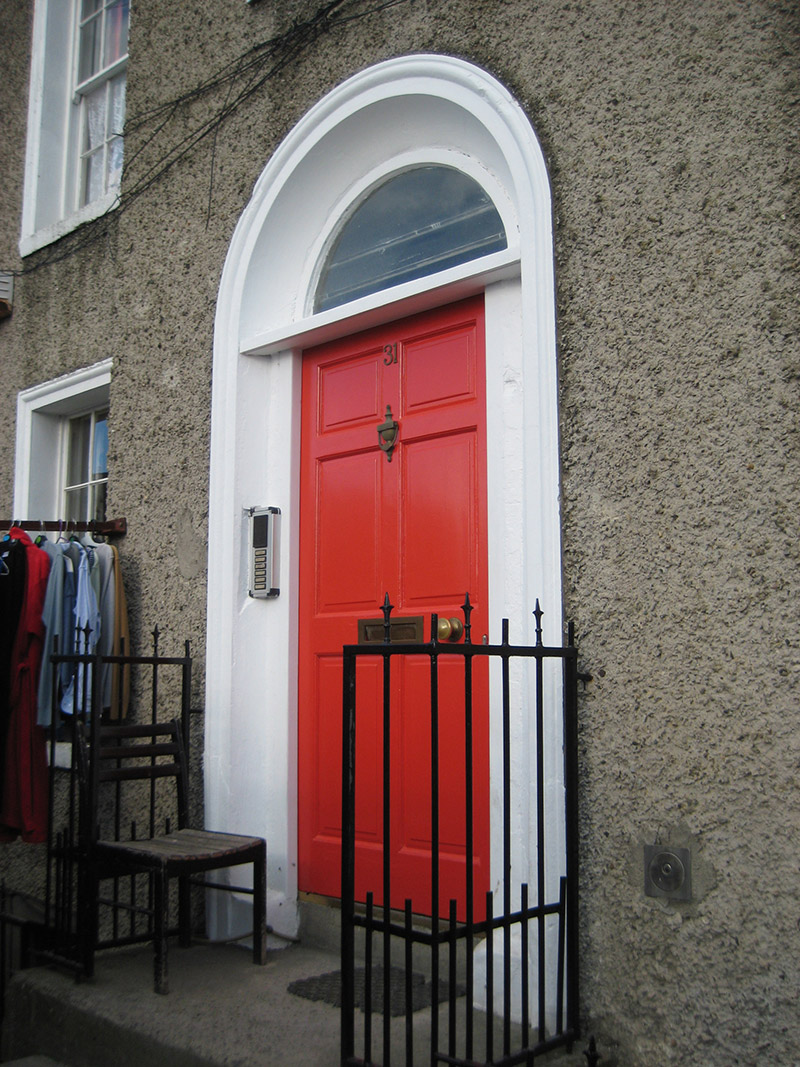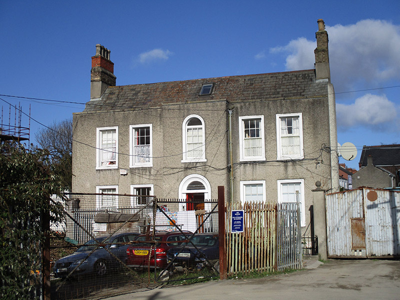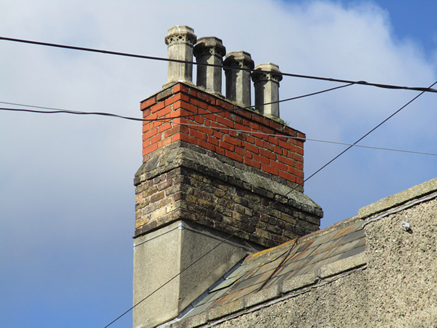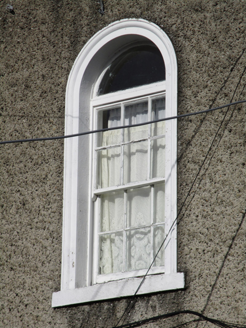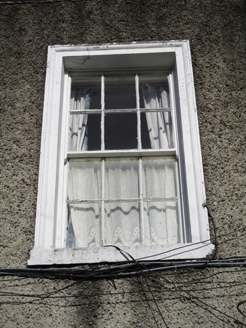Survey Data
Reg No
50120057
Rating
Regional
Categories of Special Interest
Architectural
Original Use
House
In Use As
Apartment/flat (converted)
Date
1780 - 1800
Coordinates
317048, 236390
Date Recorded
05/11/2017
Date Updated
--/--/--
Description
Detached five-bay two-storey former house over raised basement, built c. 1790, with central breakfront to front (south) elevation and flanking projecting bays to rear. Now in use as apartments. Pitched slate roof, with red clay ridge tiles, cast-iron rainwater goods to front, rooflights to front and rear, parapet with cut granite coping and mixed yellow brick; and red brick and rendered chimneystacks projecting from gables and having clay pots. Pebbledashed walling to front over rendered basement walling, and lined-and-ruled render and pebbledash elsewhere. Round-headed window opening to first floor of breakfront, square-headed window openings elsewhere, with cut granite sills, moulded render reveals, and six-over-six pane timber sliding sash windows; some replacement uPVC frames to basement. Round-headed doorway with moulded render reveals, replacement timber doorcase, timber panelled door and plain fanlight. Concrete steps, flanked by replacement railings on rendered plinth wall, enclosing basement area.
Appraisal
This large Georgian house retains its early form and character, and is enhanced by the well-proportioned openings and retention of salient features, notably the window frames. The stepped front facade breaks down its scale, while the mismatched brick repairs to the chimneystack reinforce its domestic character. A noted former resident of the house was Thomas Clarke, a signatory of the 1916 Proclamation and former head of the Irish Republican Brotherhood. The house backs onto the former small demesne of Annadale with which it may have been associated. The feature of projecting gable chimneys recalls a familiar seventeenth-century practice. James Joyce resided further down the street from 1899 to 1900. Richmond Avenue, north of the Tolka River, was developed following the construction of Richmond Road in the eighteenth century, and was sited to take advantage of the views of the mountains and city to the south and sea to the east.
